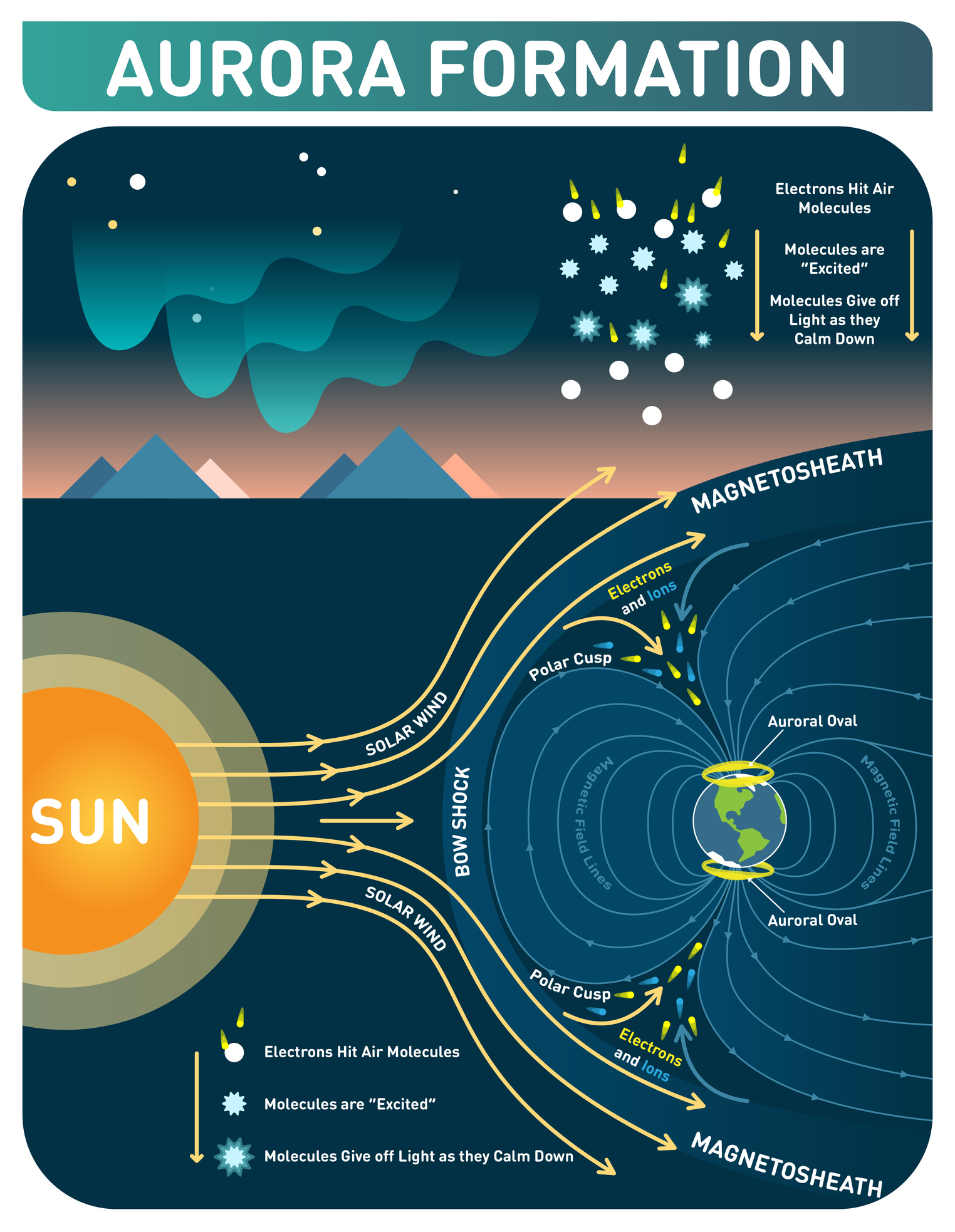The next 4 to 5 years will be the best time to see the northern lights this solar cycle
The rise in phenomenal aurora displays doesn't look like it will stop anytime soon.

The 2023/24 "aurora season" has begun and is ramping up to something quite spectacular in the next few years. Here's why aurora activity is on the rise and why now is the best time to plan your northern lights adventure.
Auroras have intrigued humans for millennia with their wispy ribbons of light dancing across the sky. Known as the aurora borealis or the northern lights in the northern hemisphere and aurora australis or southern lights in the southern hemisphere, this spectacle is one of the most beautiful natural phenomena in the world.
They are triggered when energized particles from the sun slam into Earth's atmosphere at speeds of up to 40 million mph (72 million kph). The particles are then redirected toward the poles by our planet's magnetic field, creating colorful curtains of light across the sky.
Related: Aurora colors: What causes them and why do they vary?
Simply put, their occurrence is dependent on solar activity. The more active the sun, the higher the chance of vibrant aurora shows — and that's exactly why we can expect incredible auroras over the next few years.
The sun has been continuously gaining strength since the last solar minimum in December 2019. This "aurora season" is looking particularly impressive as the sun nears its highest rate of activity — solar maximum — during its approximately 11-year solar cycle. The solar cycle describes a period of solar activity driven by the sun's magnetic field and indicated by the frequency and intensity of sunspots visible on the surface.
Experts previously estimated that the sun's activity would peak in 2025 but some recent estimations suggest it could perhaps arrive as early as the end of 2023.
Breaking space news, the latest updates on rocket launches, skywatching events and more!
Predictions are based on long-term historical records of sunspot numbers, advanced statistics and models of the solar dynamo — the flow of hot, ionized gases within the sun that generate our star's magnetic field which in turn drives the solar cycle.
As with any prediction, there is a level of uncertainty. Scientists cannot pinpoint exactly when solar maximum will occur but we do know it's on its way.
"Currently for solar cycle 25, by synthesizing all published predictions, the time interval for the cycle maximum ranges from late 2023 to early 2025" Frédéric Clette, solar physicist, World Data Center Sunspot Index and Long-term Solar Observations (SILSO) and Solar Influence Data analysis Center (SIDC) told Space.com in an email.
NOAA's Space Weather Prediction Center (SWPC) recently issued a revised prediction that suggests solar maximum may occur between January and October 2024.
The current solar cycle is classified as "moderate" by scientists studying the number of sunspots and comparing them to the long-term reference index. The "moderate" ranking means the current cycle is more intense than the previous Solar Cycle 24 but lower than previous cycles (23 and 22).
This is great news for aurora chasers as "The next 4-5 years will be the most favorable for auroral sightings," Clette continued.
But what is causing this rather long "aurora season"? There are two main factors at play.
Firstly, "moderate" solar cycles typically produce a flat and extended solar maximum for about two years and can contain two or more "sub-peaks" of activity during this time, compared to "strong" cycles that peak for less than a year.
Secondly, the type and position of active regions on the sun vary throughout the solar cycle.
"After the maximum, active regions emerge closer to the solar equator (thus also closer to the orbital plane of the Earth), than before the maximum," Clette explains.
During the declining phase of the solar cycle, there is also a larger proportion of giant and more magnetically complex sunspots, which are more prone to powerful solar flares that could trigger geomagnetic storms and strong auroral displays on Earth.
"This is why the nicest auroral displays in a solar cycle can still be expected several years after the peak of the cycle has been passed," Clette continued. " For the current cycle, this means well beyond 2024, and perhaps until 2028."
With a promising aurora forecast for the coming few years, now is the best time to plan your aurora sightseeing trip. If you want some inspiration, our where to see the northern lights guide can help.
If you are unable to make the most of the solar maximum, don't worry. Auroras never stop and can be seen throughout the solar cycle even during periods of low solar activity. This is because weak to moderate coronal mass ejections associated with filament eruptions persist throughout the whole cycle, and maintain the "background" geomagnetic activity that triggers auroras.
"Even during solar cycle minima. Aurorae never completely die out," Clette said.

Daisy Dobrijevic joined Space.com in February 2022 having previously worked for our sister publication All About Space magazine as a staff writer. Before joining us, Daisy completed an editorial internship with the BBC Sky at Night Magazine and worked at the National Space Centre in Leicester, U.K., where she enjoyed communicating space science to the public. In 2021, Daisy completed a PhD in plant physiology and also holds a Master's in Environmental Science, she is currently based in Nottingham, U.K. Daisy is passionate about all things space, with a penchant for solar activity and space weather. She has a strong interest in astrotourism and loves nothing more than a good northern lights chase!

